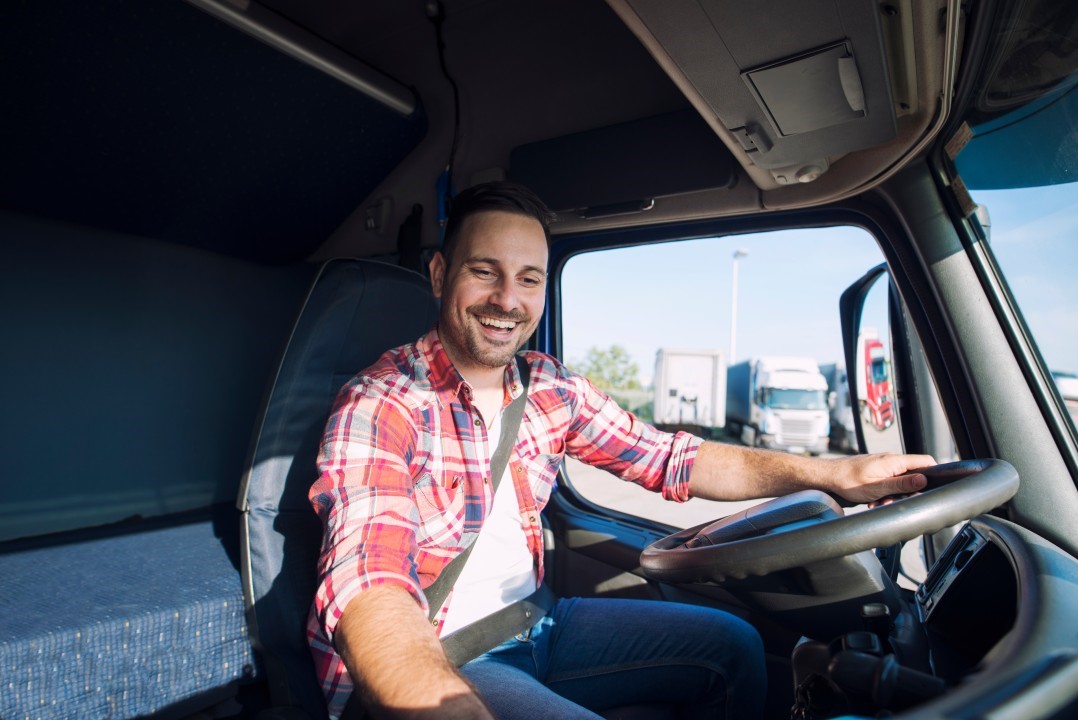
Susie Jones
Die Macht der Musik in der Lkw-Branche
Erstellt: 28.08.2024
•
Aktualisiert: 28.08.2024
Für Lkw-Fahrer, die endlos durch Großbritannien und Europa fahren, ist Musik mehr als nur eine Hintergrundbeschallung - sie ist ein Begleiter, der die Langeweile vertreibt und dafür sorgt, dass sie wach, engagiert und auf die bevorstehende Fahrt konzentriert bleiben. Musik kann das Wohlbefinden des Fahrers verbessern und die Sicherheit auf der Straße erhöhen.
Warum Musik für Lkw-Fahrer wichtig ist
Mit vielen Stunden auf der Straße und Tagen fernab von Freunden und Familie kann das Leben eines Lkw-Fahrers manchmal eine einsame Angelegenheit sein. Musik kann eine Reise verändern, indem sie die Stimmung hebt und den Fahrer auf die Straße konzentriert. Sie kann auch für Ruhe und Gelassenheit während der Ausfallzeiten des Fahrers sorgen.
Musik und Fahrsicherheit
Musik verhindert nicht nur Langeweile im Straßenverkehr, sondern kann auch die Verkehrssicherheit beeinträchtigen. Eine Studie hat gezeigt, dass laute Musik (alles über 95 Dezibel) die Reaktionszeit um bis zu 20 % verkürzen kann. Die Studie zeigte auch, dass Musik mit 55 Dezibel die Fahrleistung verbessert - dieselben Fahrer fuhren besser als diejenigen, die keine Musik hörten.
Musik kann auch die Stimmung in stressigen Situationen verändern - sanfter Rock und Jazz können den Fokus und die Konzentration des Fahrers verbessern. Wer gerne schnellere Musik hört, sollte aufpassen. Tests haben bewiesen, dass Musik mit höheren Beats pro Minute eher dazu führt, dass man zu schnell fährt und seine Geschwindigkeit unterschätzt. In einigen Fällen führte schnellere Musik zu Schlangenlinien, zur Missachtung roter Ampeln und zu einer erhöhten Kollisionsrate.
Eine von Autotrader durchgeführte Studie ergab, dass die besten Songs für Lkw-Fahrer von Pop-Künstlern stammen, da sie die Konzentration verbessern. Die Studie wurde anhand einer Reihe von Tests zur Gefahrenwahrnehmung durchgeführt, während Playlists von 20 verschiedenen Künstlern gehört wurden. Drake erreichte mit 59,5/75 Punkten den ersten Platz, während Ariana Grande und Eminem mit 58,5/75 Punkten den zweiten Platz belegten.
Die Wirkung auf die körperliche und geistige Gesundheit
Die [JED-Stiftung] (https://jedfoundation.org/resource/how-music-can-improve-your-mental-health/) hat herausgefunden, dass Musik sich aus verschiedenen Gründen positiv auf die geistige Gesundheit auswirkt:
Ablenkung - Musik kann Sie von Dingen ablenken, die Ihnen zu schaffen machen, und Ihnen als Zufluchtsort dienen.
Stresslevel - Bestimmte Arten von Musik können den Cortisolspiegel senken, was zu einem Stressabbau führt. Wenn Sie Musik hören, die Ihnen gefällt, werden auch Endorphine freigesetzt, die Ihnen ein Gefühl des Wohlbefindens vermitteln.
Aktiviert das Gehirn - Eine von [AARP] (https://www.health.harvard.edu/blog/why-is-music-good-for-the-brain-2020100721062) durchgeführte Umfrage ergab, dass diejenigen, die regelmäßig Musik hörten, weniger Angstzustände und Depressionen aufwiesen. Außerdem bewerteten 69 % derjenigen, die häufig Musikveranstaltungen besuchten, ihre Gehirngesundheit als ausgezeichnet oder sehr gut.
Stimmungsaufhellend - Der Lieblingssong eines Menschen kann seine Stimmung sofort heben.
Musik wirkt sich nicht nur auf die geistige, sondern auch auf die körperliche Gesundheit des Fahrers aus. Eine [Studie] (https://www.medicalnewstoday.com/articles/327016#Music-may-lower-cardiovascular-stress), die von mehreren Universitäten in Brasilien, dem Vereinigten Königreich und Italien durchgeführt wurde, legt nahe, dass sich Musikhören auf den kardiovaskulären Stress auswirkt. Die Studie ergab, dass die Belastung des Herzens beim Hören von Musik während des Fahrens abnimmt.
Die ultimative Trucking-Playlist
The Ultimate Trucking Playlist wurde von Fahrern für Fahrer gemacht. Jede Woche bitten wir unsere Lkw-Fahrer-Community, darüber abzustimmen, welche Songs sie unterwegs am liebsten hören würden. Sorgen Sie dafür, dass Ihr Lieblingssong auf die Liste kommt, indem Sie auf unsere Facebook-Seite gehen.

Schauen Lkw-Fahrer fern?
Viele Fahrer verbringen viele Stunden hinter dem Steuer und schauen in ihrer Freizeit Fernsehsendungen und Filme. Streaming-Dienste machen es den Fahrern leichter als je zuvor, Zugang zu den neuesten Sendungen zu erhalten. Darüber hinaus sind viele Lkw mit einer Satellitenanlage ausgestattet, die es dem Fahrer ermöglicht, bequem vom Fahrerhaus aus live fernzusehen.
Hören Trucker Hörbücher?
Musik spielt eine wichtige Rolle bei der Fahrt eines Lkw-Fahrers, aber sie ist nicht das Einzige, was die Langeweile auf langen Fahrten vertreibt. Nachdem Road Pro eine Gruppe von Lkw-Fahrern zu ihren Hörvorlieben befragt hatte, stellte sich heraus, dass Hörbücher an zweiter Stelle stehen, während das traditionelle Radio den ersten Platz belegt.
Die Verwendung von Hörbüchern am Steuer ist in die Kritik geraten, da viele der Meinung sind, dass sie eine Ablenkung darstellen. Auch wenn es leichter ist, Musik auszublenden, bedeutet das nicht, dass Hörbücher unsicher sind. Studien haben ergeben, dass viele Autofahrer durch das Hören eines Hörbuchs nicht beeinträchtigt werden - dies gilt allerdings nur für "langweilige" Strecken. In schwierigerem Gelände fiel es den Fahrern schwer, schnell zu reagieren.



